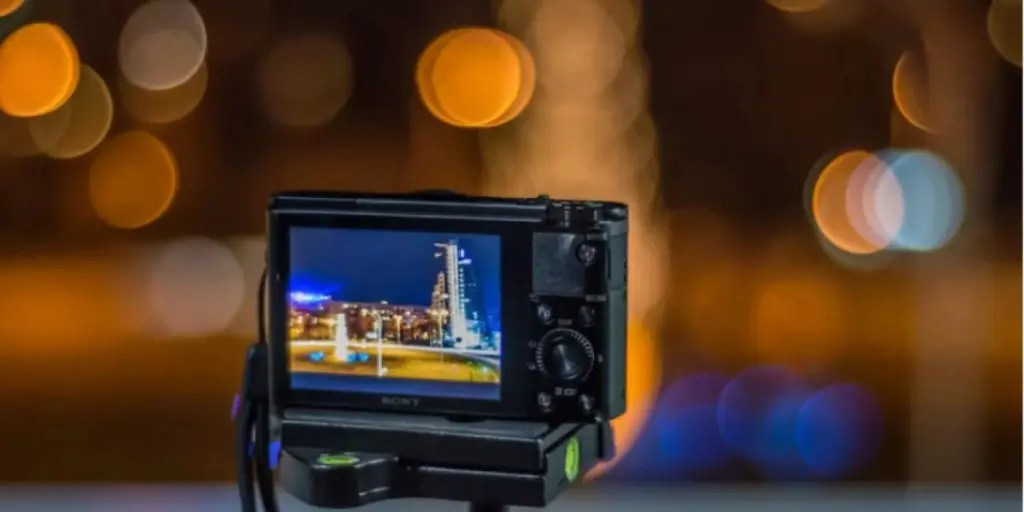In the dynamic realm of digital photography, the latest camera models of 2024 stand as testaments to technological advancement. These devices are not mere tools but gateways to a world where clarity, speed, and functionality converge to elevate the art of image capture. With each iteration, they offer enhanced features that promise to bring creative visions to life with unprecedented precision. For entities in the business of equipping photographers, from budding enthusiasts to seasoned professionals, understanding these innovations is crucial. The right camera can transform a portfolio, enrich a studio’s offerings, and redefine the boundaries of visual storytelling.
Table of Contents:
1. Exploring the spectrum of digital cameras
2. The 2024 digital camera market at a glance
3. Key considerations for selecting a digital camera
4. Spotlight on 2024’s premier digital cameras
5. Final thoughts
Exploring the spectrum of digital cameras
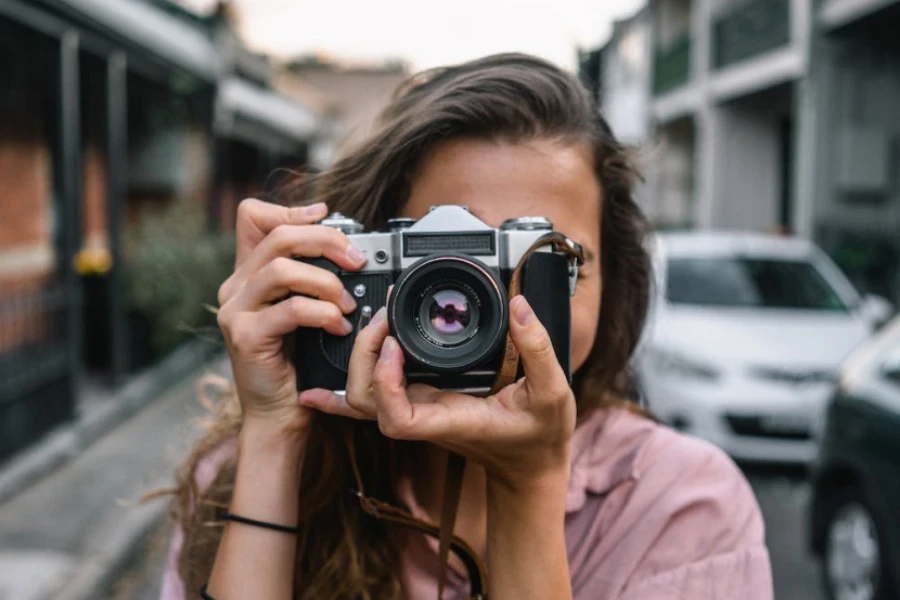
The digital camera market in 2024 presents a kaleidoscope of options, each tailored to specific photographic needs and technological advancements. The spectrum ranges from user-friendly models for those capturing life’s everyday moments to high-end devices that challenge the boundaries of professional photography.
Unveiling the camera types: a categorical synopsis
At one end of the spectrum lie the compact cameras, designed for simplicity and portability, ideal for entities equipping staff for field documentation or quick content creation. These cameras maintain a balance between quality and convenience, often embedding advanced sensors into their diminutive frames. Moving along the spectrum, mirrorless cameras offer a middle ground with their blend of high-quality imaging and lighter bodies compared to their DSLR counterparts. They are the choice for businesses requiring a fusion of portability and professional-grade imagery, such as real estate or event photography.
DSLRs continue to hold their ground with robust builds and extensive lens ecosystems. Their optical viewfinders and longer battery life make them reliable for assignments where endurance and precision are paramount. For the pinnacle of image quality, medium format cameras offer larger sensors that capture finer details, suitable for high-end product photography or large-format prints.
Tailoring camera functions to photographic pursuits
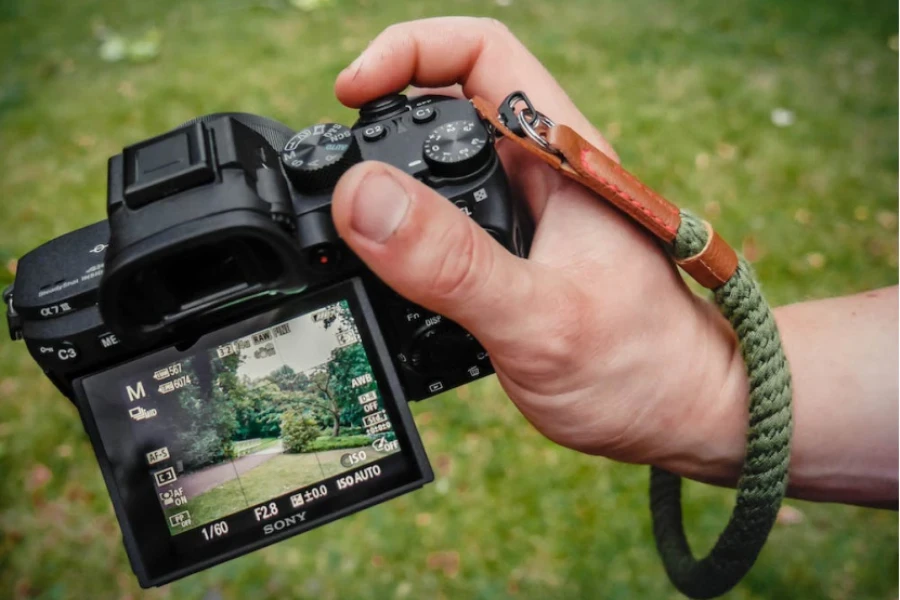
The function of a camera extends beyond its type; it’s about the right fit for the task at hand. Compact cameras, with their automated settings, allow quick operation, making them suitable for environments where speed trumps customization. Mirrorless models, with their electronic viewfinders, provide real-time previews of the final image, a boon for settings where composition and exposure must be meticulously controlled.
DSLRs offer a tactile experience with manual controls and a vast array of lenses, appealing to those who craft images with precision and wish to manipulate depth of field, motion, and light with granular control. Meanwhile, medium format cameras, with their superior sensors, are the tools of choice for projects where detail is king, from intricate product shots to expansive architectural images.
In 2024, the digital camera market is not just about the hardware but the software and connectivity that accompany it. Cameras now come with sophisticated image processing algorithms, wireless transfer capabilities, and even AI-driven functions like subject tracking and scene recognition. These features streamline workflows and open new possibilities for creative and commercial photography alike.
The 2024 digital camera market at a glance
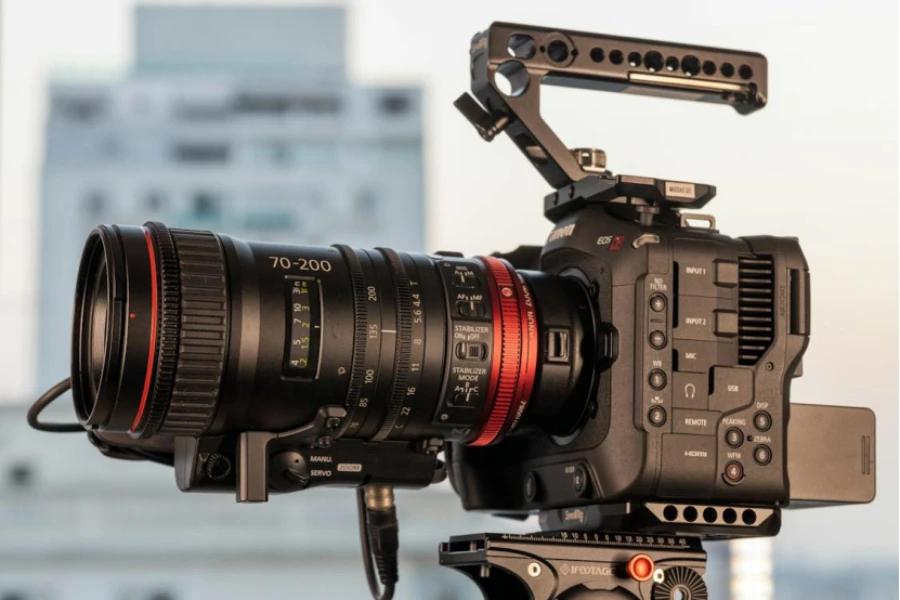
In the realm of digital imaging, the market for digital cameras presents a landscape of continuous evolution and opportunity. As 2024 unfolds, industry professionals are witnessing a market that is not only robust but also expanding with a calculated momentum. The previous year’s market revenue for digital cameras was recorded at US$22.9 billion, and current projections set a growth trajectory at a CAGR of 2.18% from 2023 to 2028, forecasting a market volume of US$25.5 billion by the end of this period.
Trends shaping the future of photography
The landscape of photography is continually reshaped by technological innovations, and 2024 is no exception. This year, the industry witnesses a surge in cameras equipped with advanced AI capabilities, enhancing everything from autofocus to exposure settings. These smart cameras not only simplify the photographic process but also open doors to creative possibilities previously unattainable. Additionally, the integration of cloud connectivity in cameras is becoming standard, allowing for seamless storage and sharing, which is essential for businesses that rely on swift distribution of high-quality images.
Market dynamics: consumer inclinations and demands
In terms of market dynamics, there is a notable shift towards mirrorless cameras, which are now dominating the market. Their compact size, combined with the power of a DSLR, makes them highly sought after by businesses that require a blend of mobility and quality. Furthermore, the demand for 4K video continues to rise, not just among videographers but also in sectors that use video for marketing and communication. This demand influences the market, with manufacturers prioritizing video capabilities alongside still imaging.
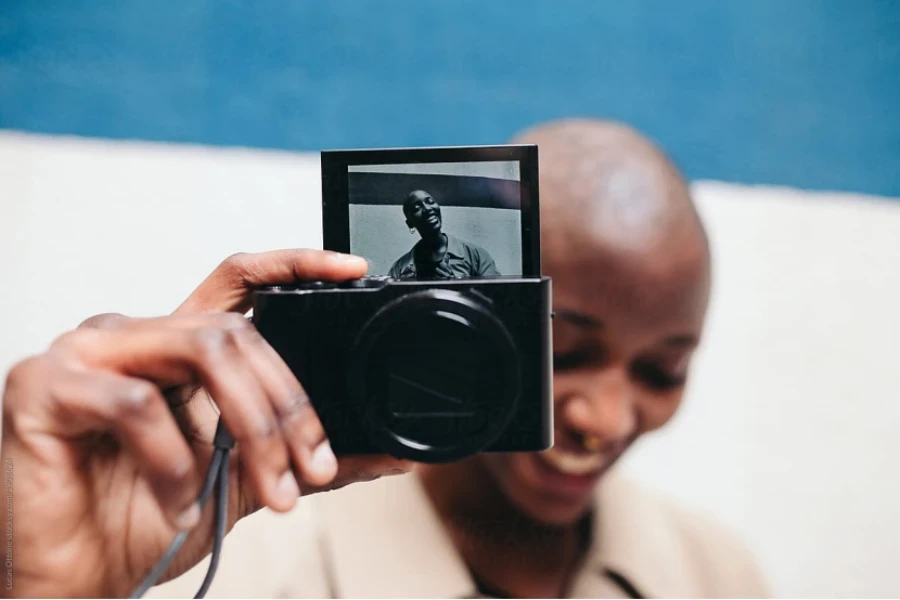
The digital camera market is also seeing a growing preference for modular designs, allowing for customization and flexibility. Cameras that can adapt to different lenses and accessories are particularly appealing, as they offer long-term value and versatility for a variety of photographic assignments.
As the market evolves, so do the expectations for image quality. High-resolution sensors are becoming a standard benchmark, even in entry-level models, ensuring that clarity and detail are not compromised. This trend is driven by the need for crisp, clear images that can be used across various media platforms, from digital screens to print.
Key considerations for selecting a digital camera
Selecting the right digital camera in 2024 is a nuanced process that hinges on several pivotal factors. These considerations are crucial for businesses aiming to equip their teams with the best tools for visual storytelling.
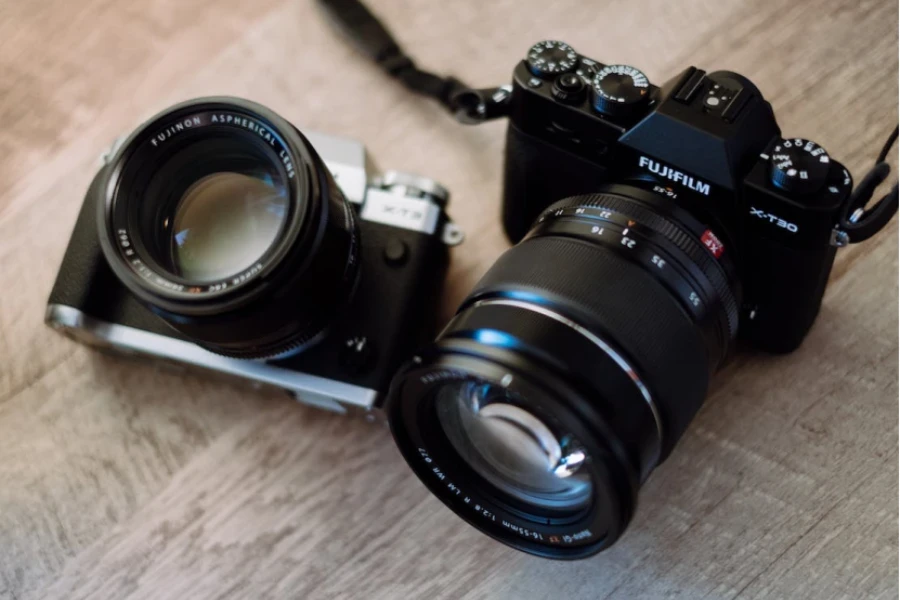
Zooming in on image quality and sensor sophistication
The sensor is the heart of a digital camera’s performance. In 2024, advancements in sensor technology have led to higher resolutions, improved light sensitivity, dynamic range, and noise reduction capabilities. Current market leaders, like the Nikon Z9, boast sensors with resolutions up to 45.7 megapixels, offering exceptional light sensitivity and dynamic range. More over, for instance, the Sony A7 IV, hailed as the best full-frame hybrid overall, boasts a 33MP sensor that excels in both stills and video. This sensor ensures that even in challenging lighting conditions, the camera can produce crisp, detailed images with minimal post-processing as well as minimal noise even at higher ISO settings. Such advancements are invaluable for businesses needing high-quality content quickly.
Design and handling: the photographer’s extension
A camera’s design and ergonomics are pivotal, as they directly impact the photographer’s ability to capture images efficiently and comfortably. In 2024, the emphasis on intuitive controls and user-friendly interfaces remains paramount. Cameras are becoming lighter and more compact, without compromising on the tactile responsiveness that professionals appreciate. For businesses, this translates to less fatigue for their photographers and greater ease in capturing images over extended periods.
Ergonomics: Cameras like the Nikon Z6 II are praised for their excellent build quality and handling, making them comfortable to use for extended periods.
Weight and Size: The Canon EOS R10 is noted for its compact and lightweight design, weighing just 429g, which is ideal for beginners or those seeking a portable camera.
Speed and focus: capturing moments in a blink

Speed is another critical factor, especially when it comes to capturing fleeting moments. The latest cameras offer lightning-fast shutter speeds and autofocus systems that lock onto subjects with precision and agility. This speed, coupled with advanced tracking algorithms, ensures that even fast-moving subjects are captured with sharp focus, a feature that is indispensable for action and event photography.
Continuous Shooting Speed: The Canon EOS R6 can shoot at 20fps, making it ideal for wildlife or sports photography.
Autofocus Performance: The Sony A7 IV boasts a 759-point autofocus system, offering class-leading autofocus capabilities for capturing fast-moving subjects accurately.
Lens selection: the gateway to photographic versatility
The lens ecosystem a camera supports can significantly affect its versatility and the quality of the final image. Lenses determine the perspective, sharpness, and depth of field of photographs. In 2024, the trend is towards lenses that offer superior optical performance with minimal aberrations, providing businesses with the flexibility to tackle a wide range of photographic assignments with a single camera system.
Lens Availability: Full-frame cameras like the Canon EOS R5 have a wide range of compatible lenses, allowing for greater versatility in photography.
Specialized Lenses: Cameras such as the Fujifilm X100V, a premium compact camera, come with a fixed focal length lens (23mm, f/2), which is perfect for street photography.
Spotlight on 2024’s premier digital cameras
The digital camera industry in 2024 is marked by a cadre of trailblazing models that set new standards in imaging technology. These cameras are not just tools but partners in the creative process, offering a blend of innovation and reliability that professionals in the field have come to rely on.

Showcasing the trailblazers of 2024
Canon EOS R6 Mark II: Best Full-Frame Camera Overall
Pros: Stabilized full-frame sensor, class-leading autofocus, superb picture quality, magnesium body with dust and splash protection, sharp EVF, swing-out touch LCD, 40fps tracking with e-shutter, full-width 4K60 with 10-bit color, 6K support over HDMI.
Cons: Limited third-party lens support, fragile micro HDMI port.
Key Specs: 24MP CMOS sensor, Dual Pixel CMOS AF, up to 204800 ISO, 5-Axis IBIS, dual SDXC card slots.
Canon EOS R7: Best Crop-Sensor Camera for Moving Subjects
Pros: Excellent value, stabilized 32.5MP sensor, magnesium body material resists dust and splashes, class-leading autofocus with subject recognition, 15fps with mechanical shutter, 4K60 video with 10-bit C-Log3 or HDR.
Cons: Hybrid rear control wheel may not be to everyone’s liking, so-so EVF for an enthusiast camera, electronic shutter not ideal for freezing action.
Key Specs: 32.5MP CMOS sensor, Dual Pixel CMOS AF, up to 51200 ISO, 5-Axis IBIS, dual SDXC card slots.
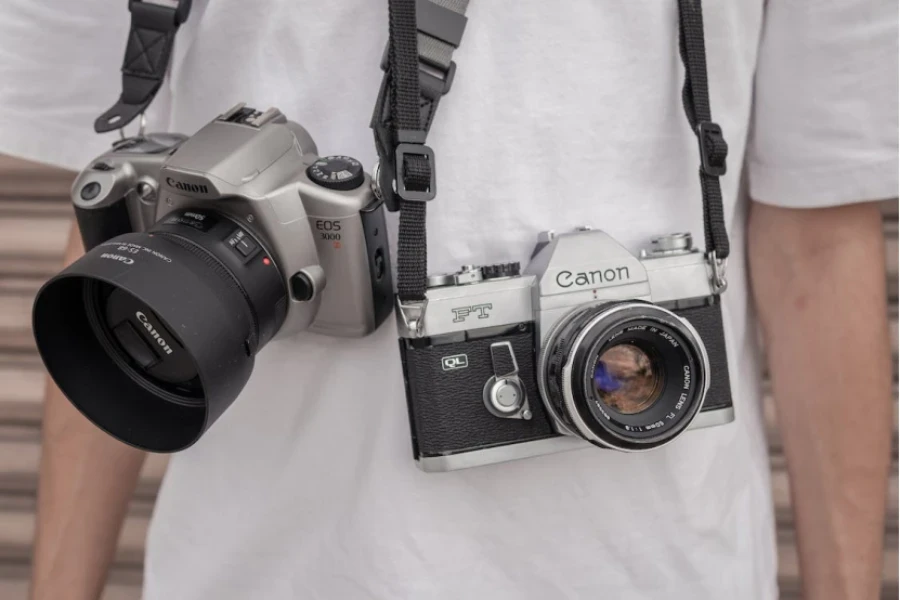
Fujifilm X-S20: Best Mirrorless for Enthusiasts and Creators
Pros: Magnesium body with swing-out LCD, subject recognition autofocus system, long battery life, 7-stop stabilization, built-in flash, diverse set of film simulation looks, 10-bit 4K60 and 6K30 video.
Cons: Not weather-sealed, undersized EVF, prone to overheating.
Key Specs: 26MP X-Trans BSI CMOS sensor, up to 51200 ISO, 5-Axis IBIS, single SDXC card slot.
GoPro Hero12 Black: Best Action Camera
Pros: Class-leading video stabilization, 10-bit HDR, GP-Log, and SDR video profiles, up to 5.3K60, 4K120, or 2.7K240 recording, front and rear displays, tough, waterproof build.
Cons: Drops long-running GPS feature, limited headphone support for wireless audio, one battery may not last all day.
Key Specs: 27MP sensor, waterproof up to 33 feet, single microSDXC card slot.
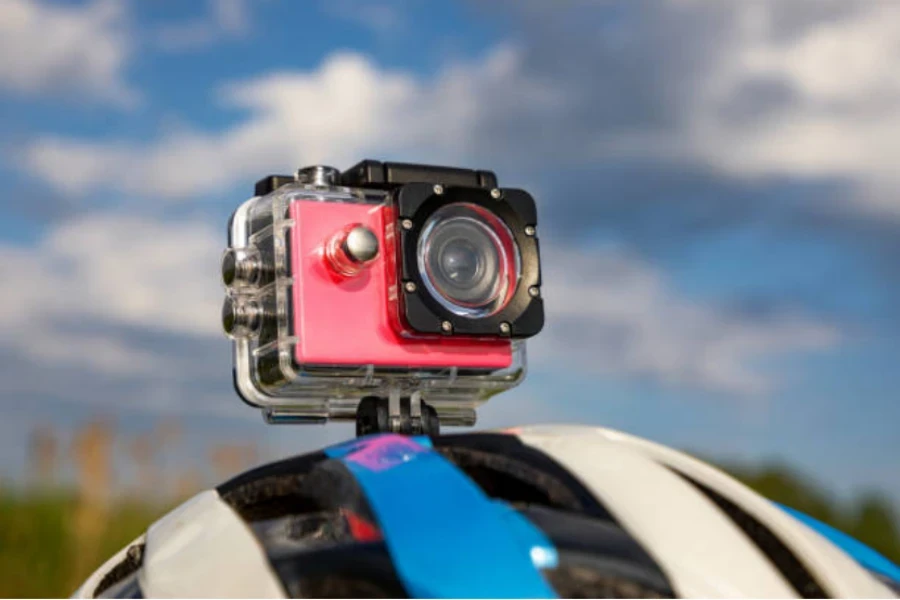
Panasonic Lumix DC-G9 II: Best Micro Four Thirds Mirrorless
Pros: Crisp 25MP photos with 100MP multi-sampling, fast phase detect focus system, effective subject recognition and tracking, large, 120fps EVF, 16-bit Raw images, stabilized 10-bit video.
Cons: Oversized body for Micro Four Thirds, omits UVC/UAC webcam support, middling battery life.
Key Specs: 25MP CMOS sensor, up to 25600 ISO, 5-Axis IBIS, dual SDXC card slots.
Sony a7 IV: Best Full-Frame Lens Library
Pros: Stabilized full-frame imaging and video, 33MP resolution, 4K60 video with 10-bit color sampling, subject recognition for people, animals, and birds, large lens library.
Cons: 6fps burst shooting at highest quality settings, omits Pixel Shift multi-shot mode, rear display not as crisp as competitors.
Key Specs: 33MP BSI CMOS sensor, up to 204800 ISO, 5-Axis IBIS, dual card slots with CFexpress and SDXC support.
DJI Osmo Pocket 3: Best for Vlogging
Pros: Large image sensor excels in dim light, excellent battery life, records long clips without overheating, built-in wireless mic support, USB-C charging.
Cons: Not rugged or weatherproof, costs more than the Pocket 2.
Key Specs: Type 1 sensor, 20mm lens, gimbal stabilization, single microSDXC card slot.
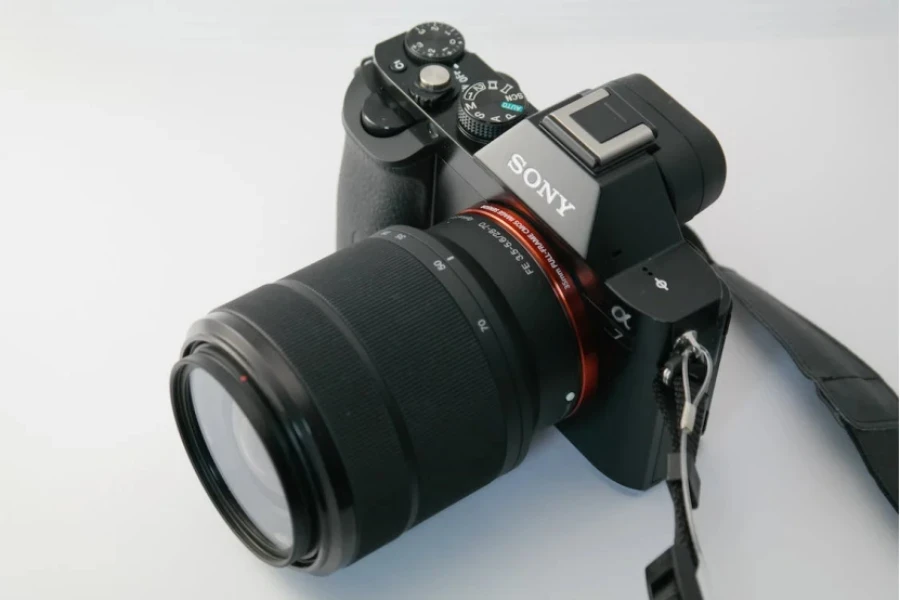
Sony Cyber-shot DSC-RX100 VII: Best Premium Compact
Pros: Sharp 8x zoom lens, electronic viewfinder, 1-inch sensor design, 20fps capture with subject tracking, eye detection for people and pets, tilting touch screen, 4K video with external microphone port.
Cons: Expensive, can’t start video while images are writing to card, limited touch functions.
Key Specs: Type 1 sensor, 24-200mm equivalent zoom, single SDXC card slot.
Sony a6700: Best APS-C for Sony E Lenses
Pros: Compact body with EVF, 5-axis stabilized sensor, swing-out LCD for video and selfies, high-capacity Z series battery, nearly full-width, 10-bit recording at up to 4K60, 4K120 slow-motion, improved menu system.
Cons: No focus joystick, outdated EVF, limited to 11fps tracking, only one SDXC card slot, might overheat during video recording.
Key Specs: 26MP BSI CMOS sensor, up to 102400 ISO, 5-Axis IBIS, single SDXC card slot.
Feature face-off: comparing the market leaders
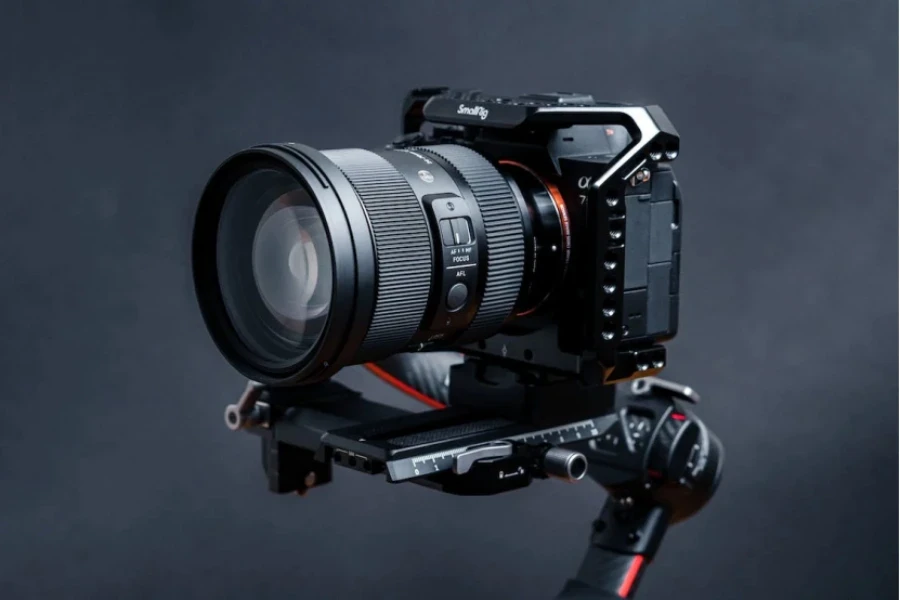
These cameras represent the pinnacle of current digital camera technology, offering a range of options for different types of photographers, from professionals to enthusiasts to vloggers. The Canon EOS R6 Mark II stands out for its full-frame sensor and superb autofocus, while the Canon EOS R7 offers great value for those looking for a crop-sensor camera. The Fujifilm X-S20 and Sony a6700 are excellent choices for enthusiasts and creators, with the Sony offering a large lens library. For action photography, the GoPro Hero12 Black and DJI Osmo Pocket 3 are top picks, with the GoPro offering class-leading video stabilization and the DJI excelling in vlogging scenarios. The Panasonic Lumix DC-G9 II is the best option for those invested in the Micro Four Thirds system, and the Sony Cyber-shot DSC-RX100 VII is the go-to for a premium compact camera. Lastly, the Canon EOS R10 offers a great entry point for action photography under $1,000.
When comparing the market leaders, it becomes evident that differentiation hinges on more than just megapixels or price points. The leading cameras of 2024 excel in their unique offerings, such as unparalleled low-light performance, cutting-edge video capabilities, and even modular designs that allow for a high degree of customization. These features are not just about keeping up with trends; they are about setting them, providing professionals with the tools they need to push the boundaries of their craft.
Final thoughts
The selection of digital cameras in 2024 presents a rich tapestry of options, each tailored to the intricate needs of the photographic profession. With advancements in technology offering unprecedented quality and functionality, entities invested in the procurement of these devices can do so with a well-informed perspective, ensuring that their choices not only meet but exceed the demands of their dynamic industry. This discernment in selection is not merely about preference but about harnessing tools that will define the visual stories of tomorrow.
